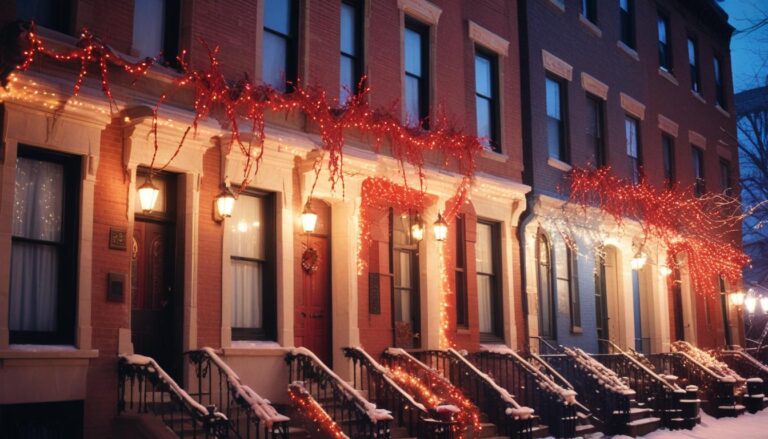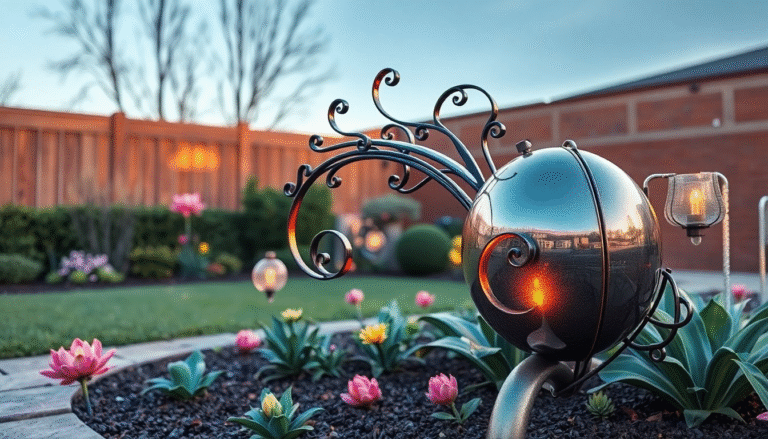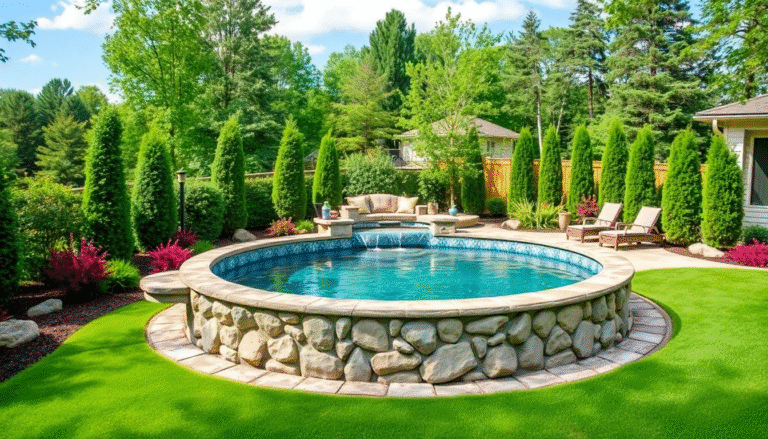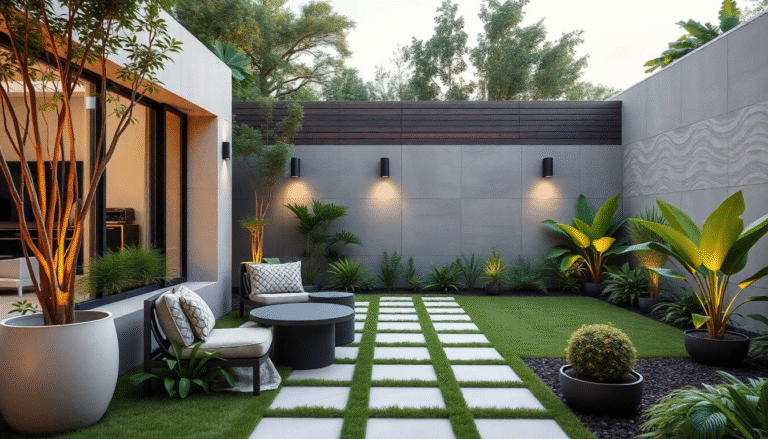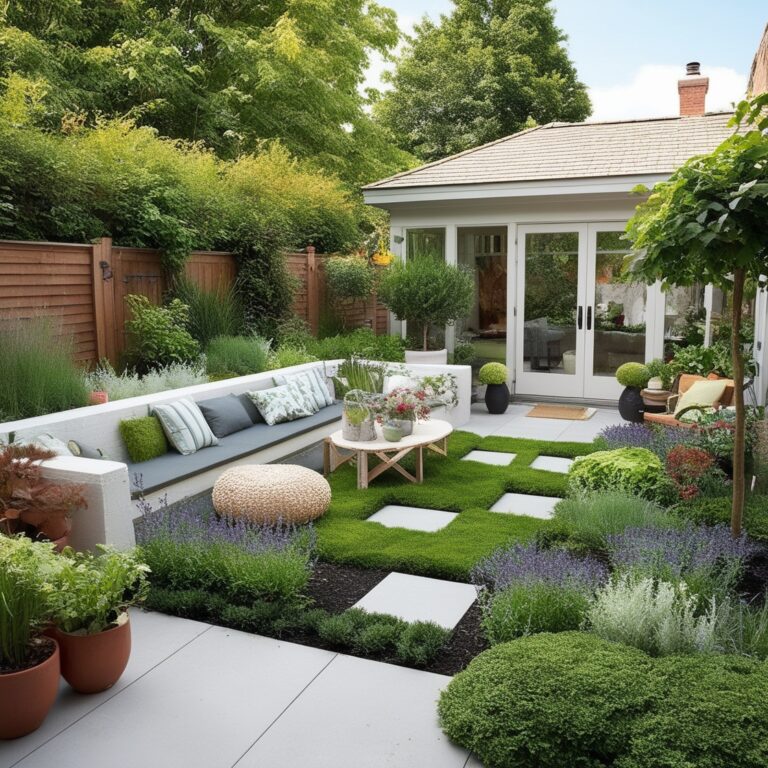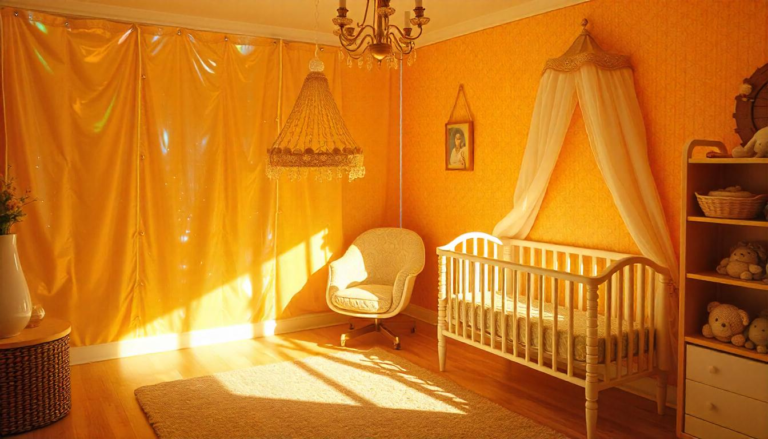21 Front Yard Landscaping Design Ideas
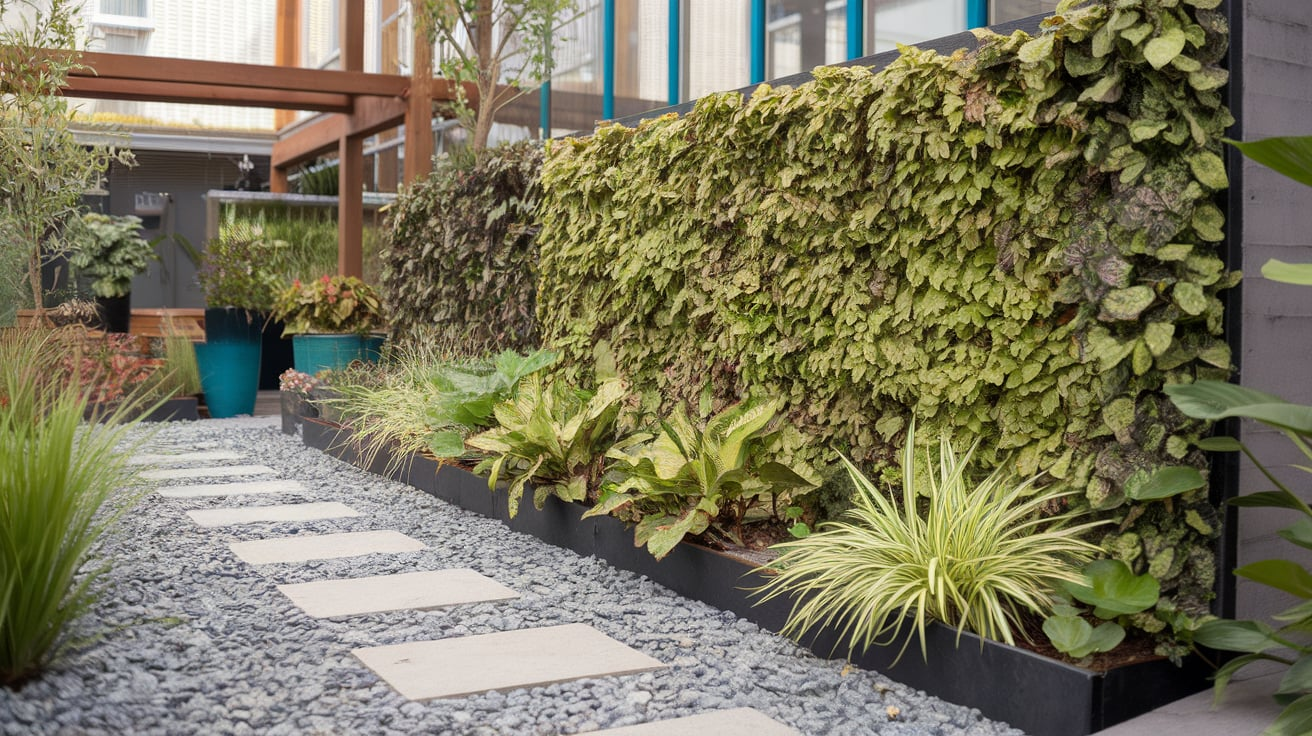
Your front yard is the first impression your home makes—like the opening act of a great concert or the aroma from a bakery that pulls you in before you even step inside.
It sets the tone. It whispers (or screams), “Here’s what you’re walking into.”
But designing a front yard that’s equal parts welcoming, practical, and jaw-dropping? That takes more than just mowing the lawn.
So let’s dig deep (pun intended), roll up our sleeves, and talk about 21 front yard landscaping design ideas that’ll not only boost your curb appeal but make your house the showstopper on the block.
I’ve walked this path myself—grabbing a shovel, turning dirt, planting regrets (and later, hydrangeas).
I’ve learned a few secrets along the way, and I’m ready to spill them all.
1. Plant a Symmetrical Flower Bed for Balance
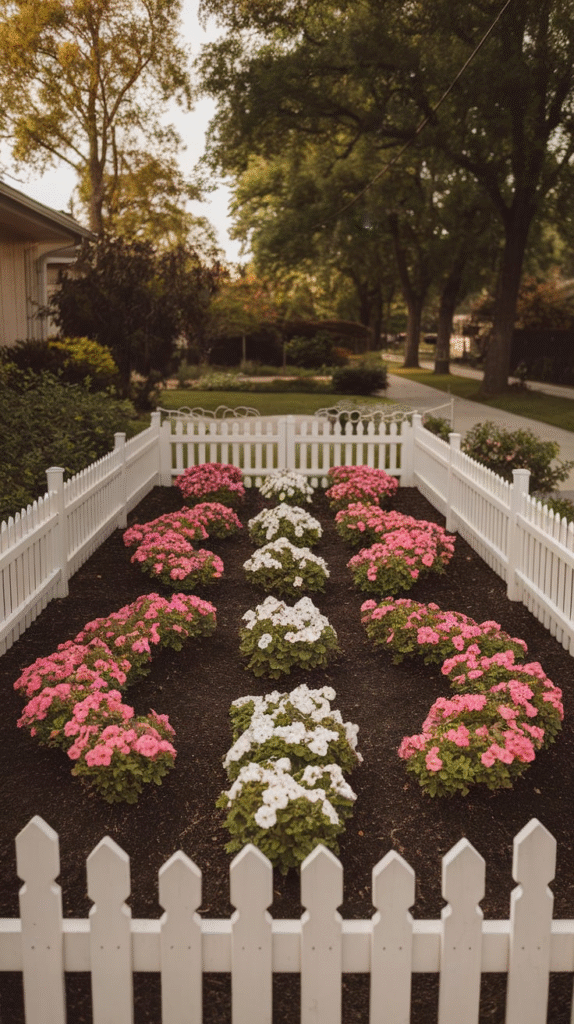
Symmetry is your secret landscaping weapon—it’s like eyeliner for your front yard: even, clean, and attention-grabbing.
Whether you’ve got a path leading up to your front door or just a wide open lawn, framing your entrance with mirrored flower beds on either side is an instant level-up.
Use perennials like lavender or salvia for structure and seasonal blooms for a pop of color.
Studies have shown that symmetry is naturally pleasing to the human brain—so give your visitors that dopamine hit right at the curb.
2. Light the Path with Low-Voltage Landscape Lights
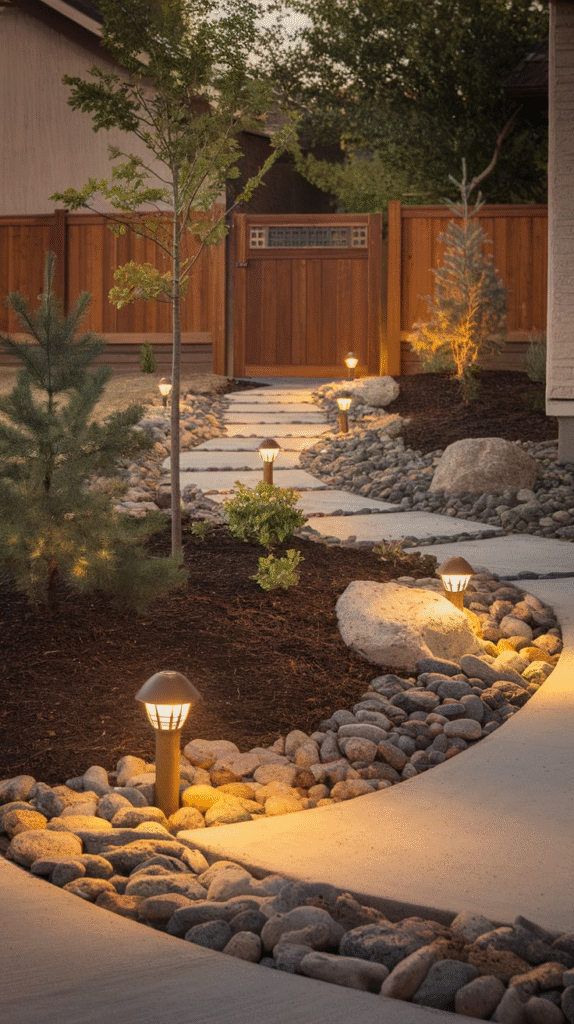
Lighting isn’t just for ambiance—it’s also a safety feature and a drama-builder.
I once tripped on a garden gnome because our path was pitch black at night. Never again.
Use solar-powered or low-voltage LED path lights to guide visitors safely while highlighting textures and plants.
According to the American Lighting Association, outdoor lighting can increase your home’s value by up to 20%.
3. Mix Textures with Rocks, Mulch, and Grass
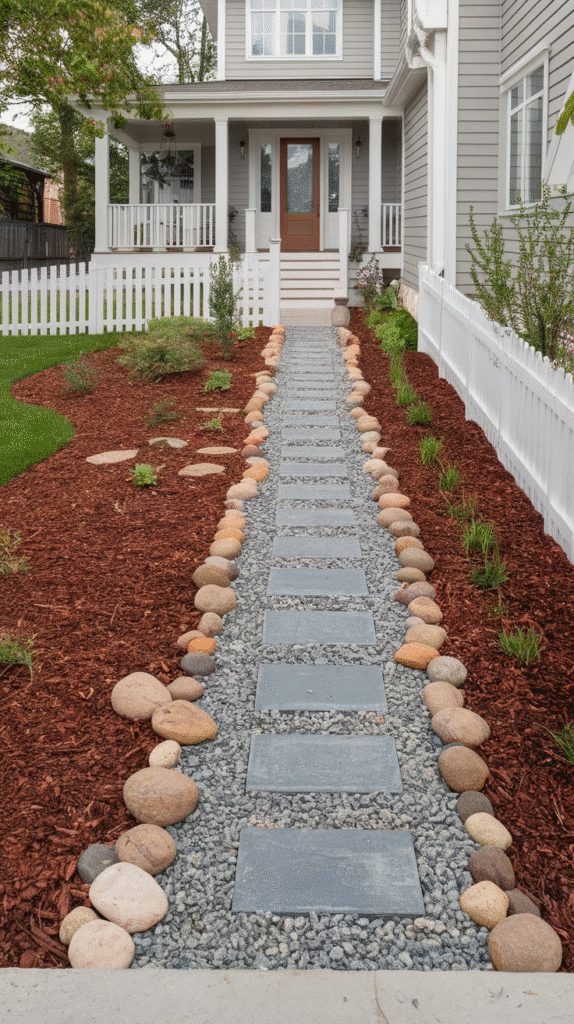
Think of your front yard like a charcuterie board—it needs a variety of textures to look interesting.
Combining natural mulch, ornamental gravel, smooth stones, and fresh grass gives your space a layered, curated look.
Texture keeps things from looking flat. Use pea gravel around trees, river stones near your walkways, and mulch beds under plants.
This not only looks good, but it also helps with water retention and weed control. Double win.
4. Add a Statement Tree
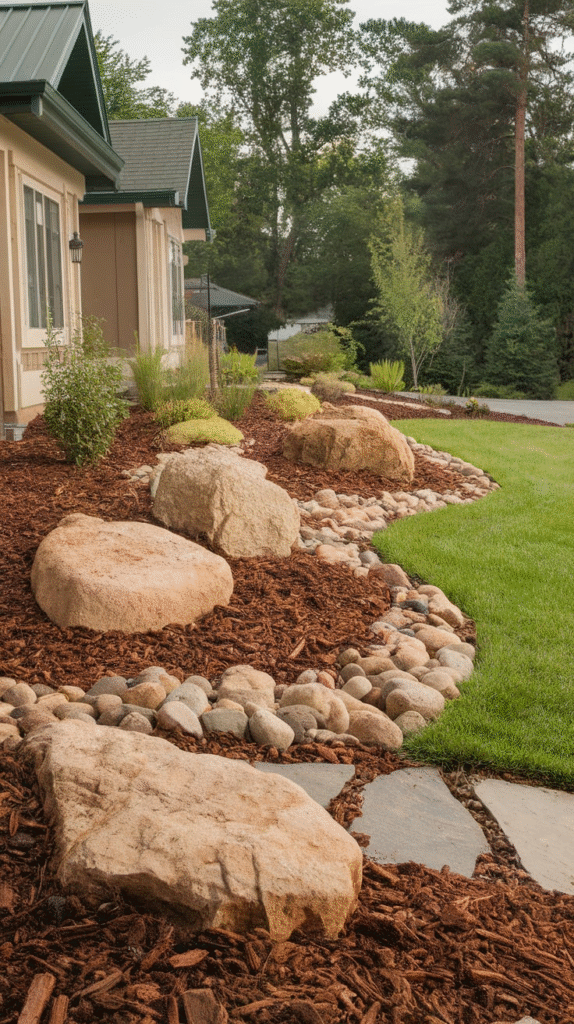
If your yard’s feeling “meh,” a statement tree is like adding a chandelier to a plain room.
Go for something sculptural like a Japanese maple, a crape myrtle, or a weeping cherry.
According to the Arbor Day Foundation, mature trees can add up to 10% to your property value, and they also shade your home, reducing summer energy costs by up to 20%.
5. Design a Curved Walkway
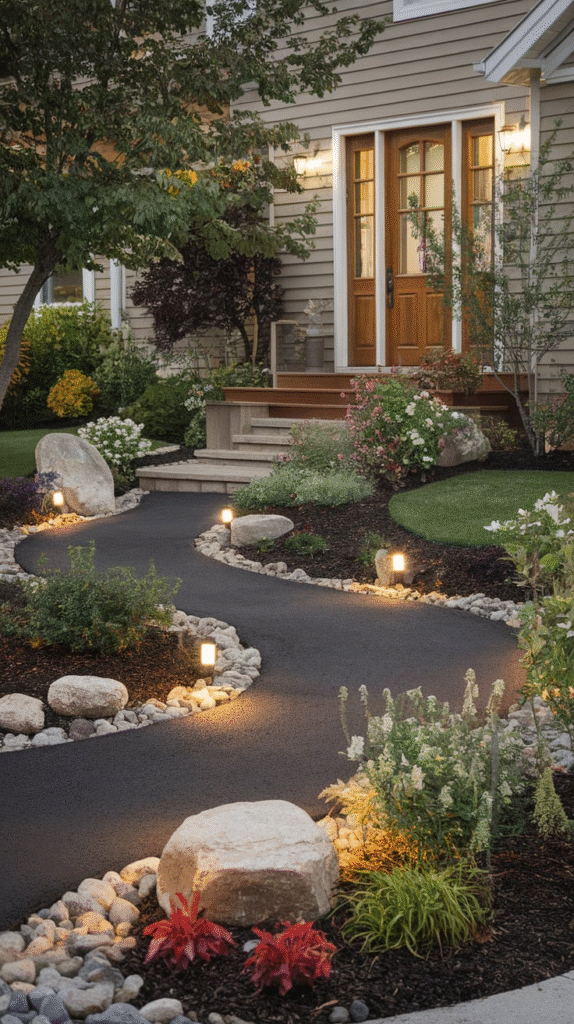
Straight paths say, “Here’s the door.” But curved walkways whisper, “Come explore.” They add a sense of mystery and elegance.
Lay out a winding path using flagstone, brick, or crushed granite and line it with low-growing plants like hostas or creeping thyme.
Trust me, the slight curve will make your front yard feel three times bigger. It’s landscape illusion 101.
6. Frame the House with Evergreens
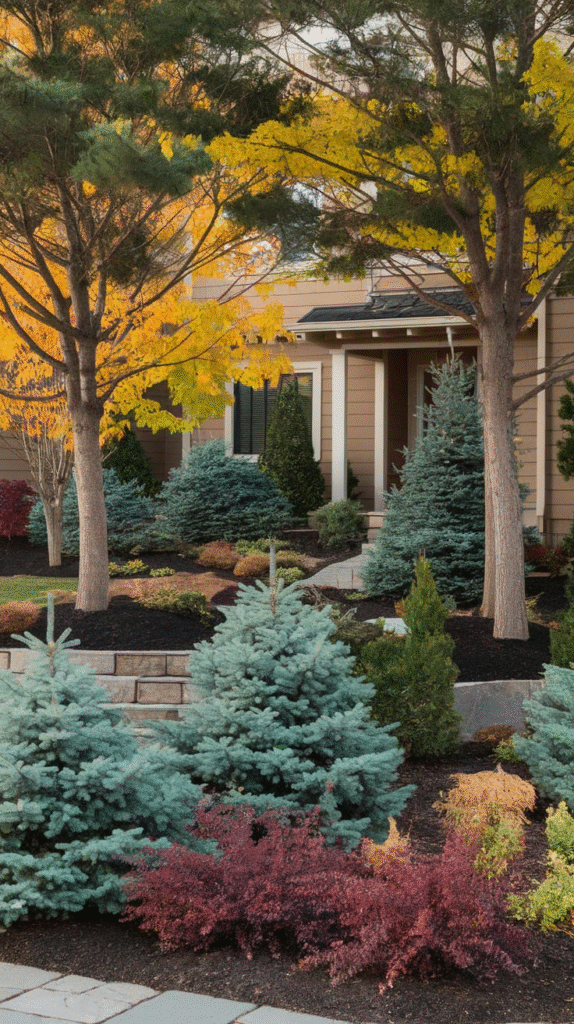
Every house looks better when it’s dressed for the season. That’s where evergreens come in.
Use boxwoods, arborvitae, or dwarf spruces around the foundation to keep the yard structured all year long.
They’re your landscape’s backbone—always standing tall, never taking a season off.
And if you shape them just right? They’ll look like Mother Nature’s topiary soldiers guarding your castle.
7. Create a Mini Courtyard Near the Entry
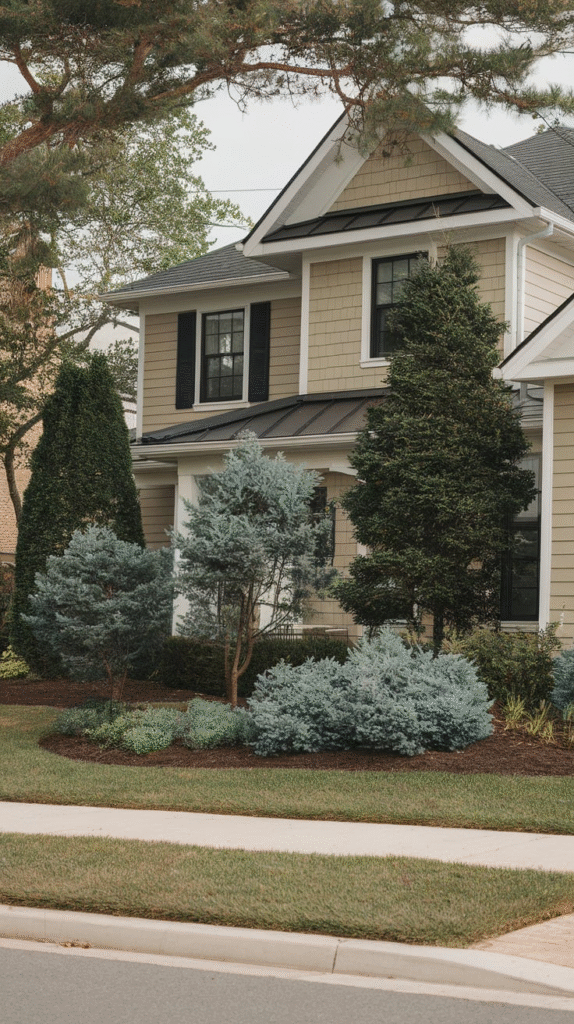
Here’s a secret: your front yard can have a “room” too.
Add a small seating nook with a bench, potted plants, and maybe a water feature, and suddenly your space is more than just lawn.
It becomes a gathering point, a morning coffee zone, or a neighbor-chat station. It’s about creating a vibe, not just a view.
8. Install a Low Decorative Fence
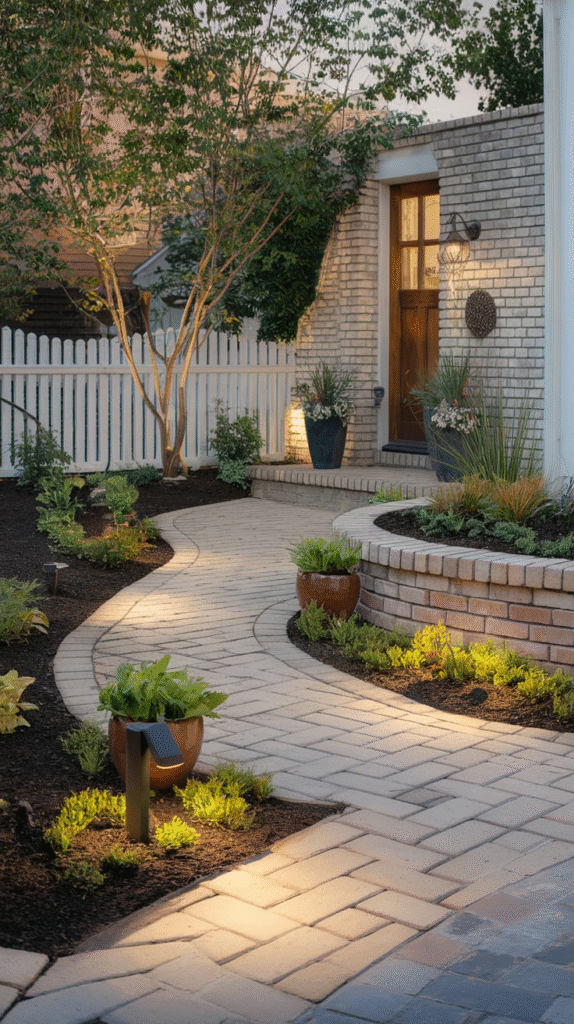
A low fence—maybe white picket, wrought iron, or even reclaimed wood—adds a charming border that says “home sweet home” without screaming “stay out.”
Fences create structure and visual containment for the space.
Studies in environmental psychology suggest that defined spaces feel more inviting and organized to both homeowners and visitors.
9. Use Raised Flower Beds for Dimension
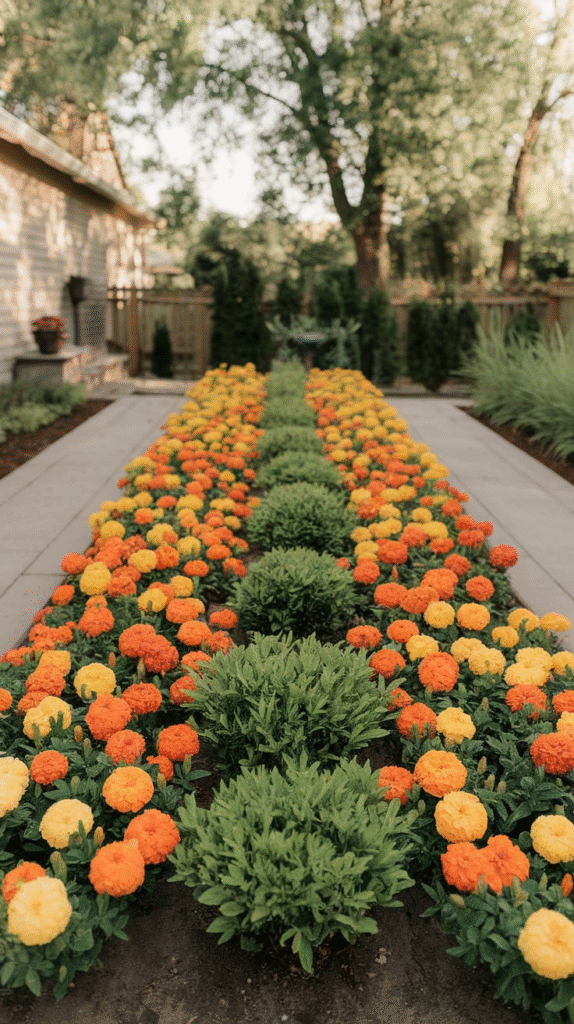
Flat yards can look like unbuttered toast—fine, but boring.
Enter raised flower beds. These not only improve drainage and soil quality, but they also give your yard visual layers.
Stack stone, brick, or cedar planks, and fill them with flowering plants, herbs, or even ornamental grasses.
You’ll look like a pro gardener even if you forget to water. (Guilty.)
10. Add Window Boxes with Cascading Plants
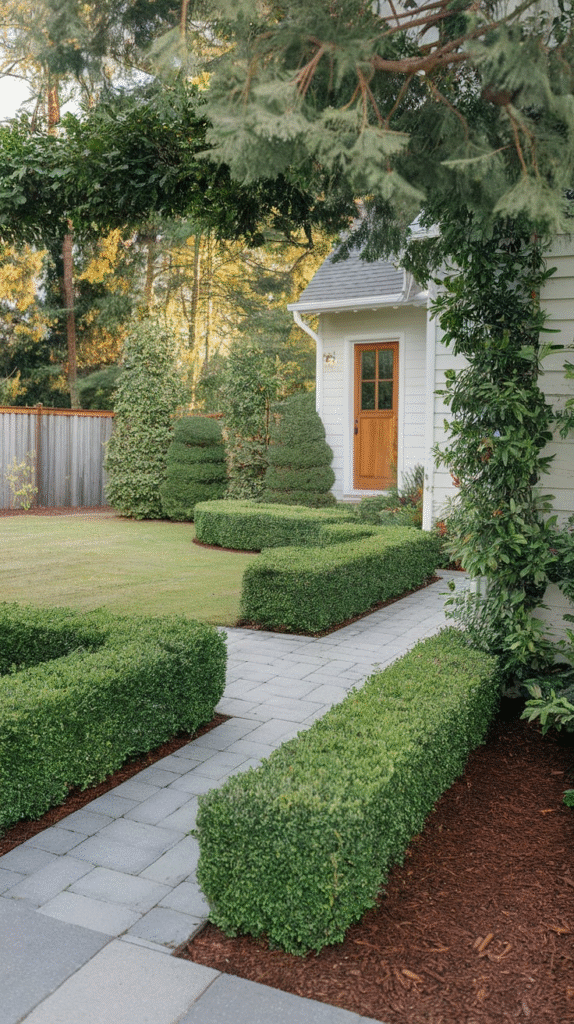
Your windows are already part of the view—so decorate them like you would your walls indoors.
Install sturdy window boxes and fill them with petunias, trailing ivy, geraniums, or calibrachoas.
A home with window boxes feels instantly warm and inviting—like it bakes cookies on Sundays and hosts wine nights on the porch.
11. Build a Gravel Garden for Low Maintenance
Lawn care isn’t everyone’s cup of tea. That’s why gravel gardens are gaining popularity—especially in drought-prone areas.
Use river rock or decomposed granite as your base, then plant drought-tolerant species like lavender, sedum, and yucca.
Gravel gardens are low-maintenance, water-wise, and modern-looking. Plus, no one ever got a mower stuck in gravel.
12. Line Your Driveway with Flowering Plants
The driveway is like the red carpet leading to your home—why not make it fabulous? Border it with flowering plants like coreopsis, black-eyed Susans, or daylilies for color and movement.
If you want extra drama, alternate taller shrubs like hydrangeas or lilacs every few feet.
It’s like giving your guests a floral fanfare every time they arrive.
13. Use Bold House Numbers and Mailboxes
Here’s a fun hack: treat your mailbox and house numbers like outdoor jewelry.
Bold, modern numbers in brass or matte black instantly elevate your home’s curb presence.
Pair them with a stylish mailbox or a vertical plant wall.
A small detail, yes—but it’s like the finishing touch on an outfit. Underestimated, but powerful.
14. Create Contrast with Dark Mulch
Here’s a visual trick the pros use: dark mulch makes green plants pop.
Use black or dark brown mulch in your beds to create depth and contrast against lighter-colored flowers or foliage.
Besides looking great, mulch helps keep weeds at bay and retains moisture—saving you time, effort, and money on watering.
15. Build a Dry Creek Bed for Drainage and Style
Got drainage issues? Instead of fighting it, turn it into a design feature.
A dry creek bed made of river stones and pebbles can channel water where it needs to go—while looking like it belongs in a zen garden.
Line the bed with ornamental grasses or ferns to give it a natural, seamless look. It’s function disguised as flair.
16. Go Wild with Native Plants
Native plants aren’t just for the eco-conscious—they’re the cheat code to a thriving front yard.
These plants are adapted to your climate and soil, meaning they require less water, fertilizer, and babying.
According to the National Wildlife Federation, yards with native plants support 70% more biodiversity than those without.
You’re not just landscaping—you’re building a little ecosystem.
17. Add a Water Feature for Sound and Movement
Even a small bubbling fountain or birdbath can transform your yard.
The sound of running water creates a peaceful vibe, masks street noise, and attracts birds and pollinators.
There’s something innately relaxing about water—it taps into our deep-brain “this-is-a-safe-place” instincts.
18. Install Vertical Trellises or Arbors
Not enough horizontal space? Go vertical. Add trellises or arbors for climbing plants like clematis, climbing roses, or morning glories.
It’s like adding a floral doorway to your yard.
These structures create height and visual interest, pulling the eye up and making your yard feel more grand.
19. Mix Seasonal Color Palettes
Each season brings its own color symphony. Plan your landscape with seasonal blooms so you always have something showing off.
Think daffodils and tulips in spring, zinnias and marigolds in summer, chrysanthemums and ornamental kale in fall, and evergreens or red twig dogwood in winter.
It’s like rotating wardrobe staples for your home’s exterior. Keeps things fresh and exciting.
20. Use Groundcovers Instead of Grass in Small Areas
Grass isn’t the only game in town.
For tight corners or shady spots where grass struggles, use groundcovers like creeping Jenny, sweet woodruff, or ajuga.
They fill in gaps, require minimal upkeep, and create a lush, carpet-like effect. Groundcovers are the unsung heroes of front yard landscaping.
21. Create a Defined Entry with Potted Plants
Flank your front door with large potted plants or small trees in matching containers.
This simple move creates a “gateway effect,” drawing the eye to your entrance and creating symmetry.
Use pots that match your home’s color palette—terracotta for Mediterranean vibes, black planters for modern looks, or aged ceramic for a cottagecore feel.
It’s an easy, changeable way to refresh your front yard with the seasons.
There you go—21 front yard landscaping design ideas that blend beauty, brains, and a little bit of dirt-under-the-nails magic.
The best part? These ideas scale. Whether you’ve got a postage-stamp-sized yard or a wide green expanse, the principles work.
And here’s my final secret: your yard doesn’t need to be perfect.
It just needs to reflect you—your style, your life, and maybe a little chaos around the edges.
Because a lived-in, loved-on yard beats a Pinterest-perfect one every time.
So go ahead. Dig in.

